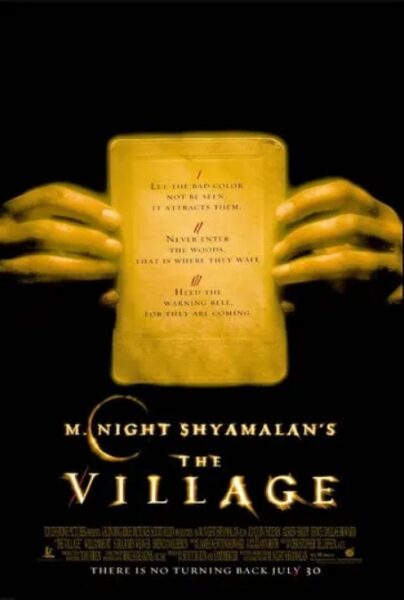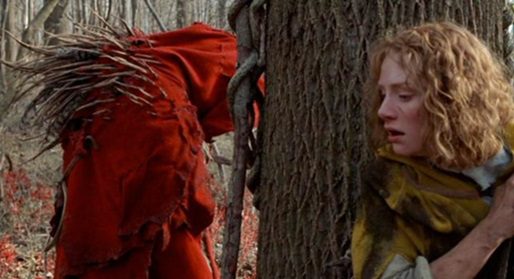With his new film Trap in theaters, M. Night Shyamalan seems to have picked up a steady rhythm of success since the critical downturn of his work in the late 2010’s. Since The Visit and Split, Shyamalan seems to have climbed out of the rut in which his string of big budgeted critical failures have put him, and Trap is a delightful continuation of his talent. The film in which many claim that initial decline began,The Village, turns 20 this year, and it is not hard to see why this belief is held, given the frustrating potential of the subject matter
The Village exudes the haunting simplicity of an old folk tale, a Pennsylvania urban legend that predates the rise in popularity of folk period horror in the decade to follow. A small community in 1897 (or so we think) lives under the shadow of an old forest that is said to be inhabited by monstrous creatures understood to be very territorial. At some point in the village’s history, the founders of the community had fled the wider world, said to be a cesspit of violence and corruption, and made a pact with these creatures that no human should ever set foot in their woods, and in kind, no creature shall ever invade the village.
This has made for a tranquil, albeit tense lifestyle for the community. That is, until a young smithy named Lucius Hunt requests permission from the village elders to pass through the woods in search of medicine the village does not have, as the community has been struck with a series of preventable, yet fatal illnesses in their youth population. Lucius’s intent soon becomes the talk of the town, and the community fears that their tenuous truce with the creatures will be coming to an end as a result. This fear is confirmed when the red cloaked beasts begin emerging from the woods and conducting regular nightly raids on the village.
The tensions, hostility, and long-buried secrets of the townsfolk come into intense focus, and drag both Lucius and his admirer, Ivy Walker, the blind daughter of one of the elders, into the crosshairs of the creatures, and they become unwitting pawns in the deceptions of the elders.

It is often forgotten how strong the first half of this movie truly is. Shyamalan paints a compelling picture of a community believing themselves to be above the corruption and venomous nature of the wider world at large, yet still falling prey to the very vices they claim they have been fleeing. There is a feeling throughout that the innocence of this wholesome community is a facade, a foul charade that the younger members are unaware of. In this fashion, Shyamalan is shown to be masterful at establishing an atmosphere of dread, and it only comes crashing down in the film’s third act due to some, in my opinion, very baffling creative decisions that will have the audience questioning their investment in the whole ordeal, and how much better the film could’ve been had Shyamalan made a few small adjustments.
The period focus of the film only works in that the characters themselves sell it, and while Bryce Dallas Howard (Jurassic World, 2015) delivers an incredible performance as Ivy Walker, and carries the film, everyone else, including Joaquin Phoenix (Signs, 2002) as Lucius Hunt, comes off as muted and stoic. One gets the sense that Shyamalan was struggling a bit with this period setting and directing his actors within it, and may have added the plot twists that he did to justify the strange and awkward interactions between characters.

Ultimately, The Village is mediocre early ’00’s fare. I have been delighted to see how period horror has improved since then, and has at least built on the strong elements of The Village.
 PopHorror Let's Get Scared
PopHorror Let's Get Scared




